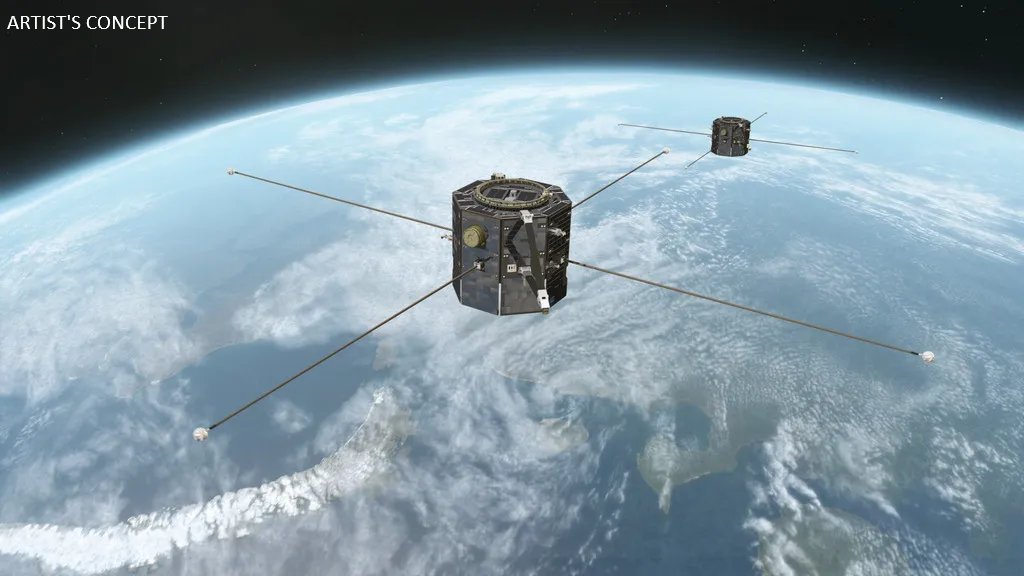NASA is gearing up for a big moment this week as its TRACERS (Tandem Reconnection and Cusp Electrodynamics Reconnaissance Satellites) mission prepares to blast off, promising to shed light on the wild dance between Earth’s magnetic field and the Sun’s solar wind. With a launch window opening at 2:13 p.m. EDT (11:13 a.m. PDT) on Tuesday, July 22, from Vandenberg Space Force Base in California, this twin-satellite endeavor is generating buzz among space enthusiasts and scientists alike. But while NASA hypes it as a leap forward in space weather forecasting, the mission’s reliance on existing tech and delayed timeline raises questions about its true impact¹.
🧲It’s a magnetic reconnection and NASA wants to learn more!
— ARCHIVED: NASA LSP (@NASA_LSP) May 2, 2025
TRACERS will study magnetic reconnection which occurs when activity from the Sun interacts with Earth’s magnetic field. Launch is now targeted for NET Summer 2025 on a SpaceX Falcon 9 from VSFB in California. pic.twitter.com/wWuh5WxWbB
So, what’s TRACERS all about? This mission deploys two small, spinning satellites—TRACERS-A and TRACERS-B—designed to study magnetic reconnection, a high-energy event where solar wind particles crash into Earth’s magnetosphere and trigger explosive field line reshuffling. This process can spark stunning auroras but also wreak havoc on satellites, GPS, and power grids. Led by David Miles at the University of Iowa and managed by the Southwest Research Institute, TRACERS will orbit in tandem through Earth’s polar cusps, funnel-shaped zones where these interactions peak, collecting data on how and where reconnection happens. The goal? Better predict space weather threats in our tech-heavy world².
The launch site, Vandenberg’s Space Launch Complex 4 East, is no stranger to action, and this time, a SpaceX Falcon 9 rocket will carry the payload. The satellites, built by Millennium Space Systems, arrived at the base in June 2025, where they’re being integrated with the rocket for a sun-synchronous orbit at 500 km altitude. The Falcon 9’s reusable Block 5 variant will hoist TRACERS into space, with the booster aiming to land back at Landing Zone 4—expect a sonic boom if weather cooperates. This rideshare mission also tags along with three other NASA smallsats, including the Athena EPIC and Polylingual Experimental Terminal, maximizing the launch’s scientific bang for the buck³⁴.
How it gets there is a well-trodden path: after liftoff, the Falcon 9 will deploy TRACERS into low Earth orbit, where the satellites will separate and align their paths, trailing each other by 10 to 120 seconds. Navigation tweaks during the cruise phase will fine-tune their trajectory, a routine NASA has mastered with missions like Artemis. But the establishment narrative, painting this as a seamless next step, glosses over the delays. Originally eyed for July 2024, the launch slipped to no earlier than summer 2025 due to prep setbacks, fueling skepticism about whether the mission’s $115 million budget is stretching thin⁵.
As for duration, TRACERS is slated for a one-year mission, banking on over 3,250 cusp encounters to gather data. The twin setup, a first for this region, aims to capture both spatial and temporal shifts in reconnection, building on single-spacecraft efforts like NASA’s MMS mission. Yet, with only a year to deliver, some wonder if the rushed timeline might skim over long-term trends, especially when solar activity cycles span years².
NASA’s pitch is that TRACERS will bolster our defenses against space weather, a real concern as satellite constellations grow. But the hype feels tempered by its piggyback status and reliance on proven tech rather than groundbreaking innovation. Posts found on X show excitement, with users hyping the launch’s potential to decode Earth’s magnetic shield, though the delay chatter hints at underlying nerves. The establishment’s rosy outlook might be overlooking the practical limits of a short mission and the real-world challenges of integrating rideshare payloads—questions that won’t be answered until the data starts flowing⁶.
Keep an eye on Vandenberg this Tuesday; the real test starts when those satellites start talking.
*Amazon affiliate, I may earn a commission.
Sources: ¹NASA Science, July 18, 2025; ²NASA Science, July 16, 2025; ³NASA Science, June 17, 2025; ⁴Spaceflight Now, July 18, 2025; ⁵NASA Science, May 1, 2025; ⁶Payload, July 18, 2025. Title photo from NASA X Account









Leave a Reply